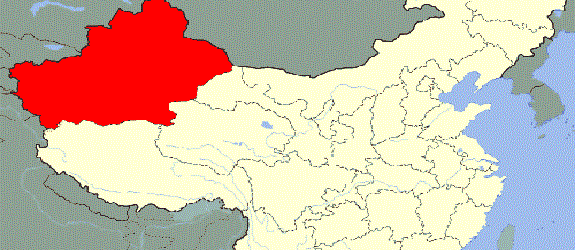According to historical sources, inhabited by the Uyghurs, the region called East Turkestan underwent assimilation upon joining the Chinese-Manchurian Empire in 1759 and continues to do so today. As the Chinese had completely established their rule there, the region was named Xinjiang – a Chinese word for a “new territory” or “new frontier”. As of then, Urumqi was declared its capital.
As a result of ethnic cleansing in the region, the Chinese now account for 41 % of the general population; Uyghur Turks are 8 million out of the 20 million population of Xinjiang, that is. In the meantime, the Chinese government has accelerated the process of assimilation of Uyghurs by relocating them to other regions of the country. Geographic location between Siberia and Indian subcontinent and being the gateway between China and Central Asia augments the East Turkestan’s geostrategic importance. And it is with China’s global economic rise that the urgency of problems of ethnic minorities came to the spotlight.
Economically, the East Turkestan is well-endowed. It accounts for 90 % of China’s cotton production and food processing and cattle breeding are also among the leading sectors. Its oil, gas and coal fields account for 30 % of China’s reserves.
Conflict background
In the past 20 years, the East Turkestan problem has rose to the level of global for a steadily economically and politically growing China. Chinese government associates emerging ethnic conflicts in the country with foreign powers. Recent independence of Kosovo dealt a “political trauma” to China, in terms of domestic ethnic minorities’ problem. It must be noted in this context that according to arrangements with neighboring Central Asian countries, Uyghurs fleeing China are extradited back. On the other hand, thanks to Shanghai Cooperation Organization, China was successful in resolving the border issue and stepping up the policy of pressure with respect to the Uyghurs problem. Thus, state’s ethnic cleansing policy impacts minorities in other regions of the country.
Throughout the years, namely in 1950, 1953, 1958, 1962, 1965 and 1968 the Uyghurs repeatedly rose against the Chinese demanding freedom but all uprisings were violently suppressed by the authorities. Official Beijing accused Rabiya Kadeer, the president of the World Uyghur Congress, residing in the U.S., of orchestrating the events. Turkey was the only Muslim nation to denounce the events in Urumqi, while Prime Minister Erdogan referred to them as genocide.
Anti-terrorism strategy pursued by China against another ethnic minority problem – Tibet, is occasionally applied against the Uyghurs. After events of 9/11 in the U.S., the Chinese launched anti-terrorism campaign of their own against the Uyghurs.
Scrutiny of the U.S. policy on the region would help to understand the problem profoundly. Since 2009, as the U.S. is implementing its policy of expansion towards the South Asia, the strategic importance of East Turkestan for China has only grown. China faces new challenges as countries such as Myanmar and Cambodia re-establish ties with the U.S. Therefore, Beijing started to consolidate its presence in Uyghur-inhabited Xinjiang province. With U.S. superseding China in maritime trade, China has focused on the Western direction through railroad network spanning the East Turkestan. Restoration of the ancient Silk Road has also boosted value of East Turkestan in terms of security.
Ultimately, the East Turkestan is China’s gateway to Europe. In this sense, fearing that massive uprising of Uyghurs may spark a chain reaction to engulf other regions of the country the authorities in China are taking no chances and resort to extreme violence while suppressing even a minor dissent. That in turn, only exacerbates China’s political and legal “headache” on the international arena.
Dr. Reşat İLYASOV
Kaynak: Newtimes.az



















































